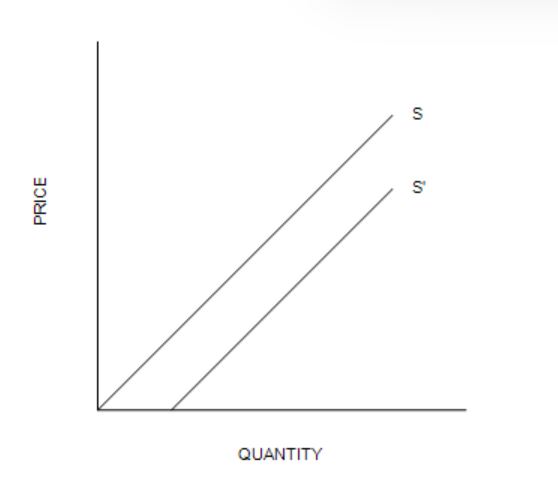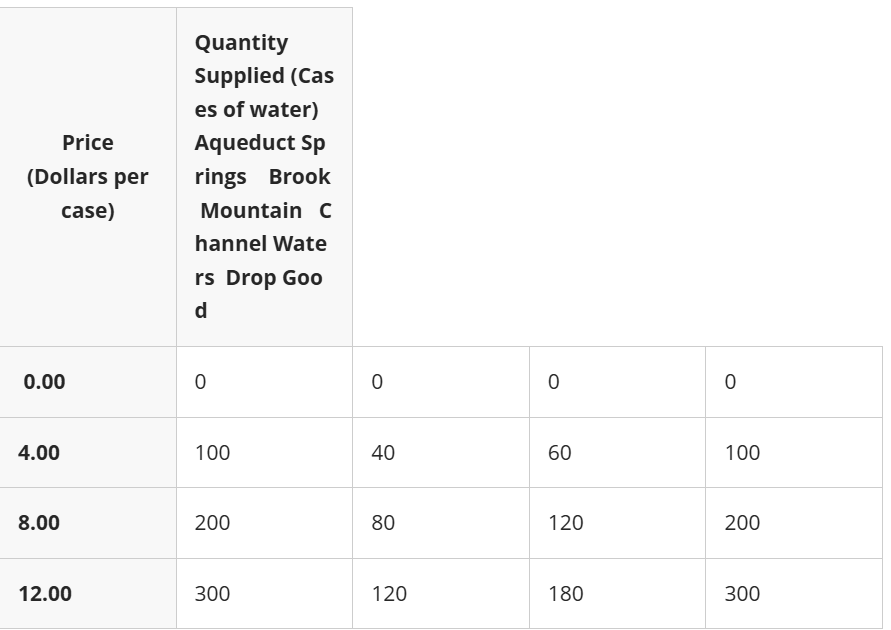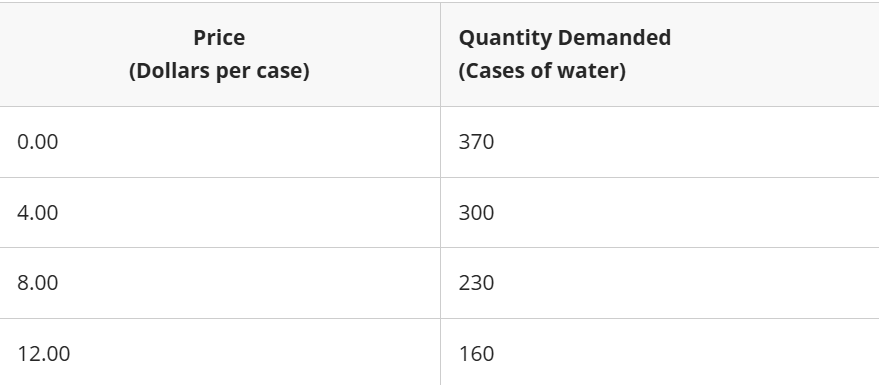Chapter 4- The Market Forces of Supply and Demand
1/19
There's no tags or description
Looks like no tags are added yet.
Name | Mastery | Learn | Test | Matching | Spaced |
|---|
No study sessions yet.
20 Terms
Which of the following is not held constant in a demand schedule?
a. Income
b. Tastes
c. Price
d. Expectations
Price
The quantity demanded of a good is the amount that buyers are
a. Willing to purchase
b. Willing and able to purchase
c. Willing, able, and need to purchase
d. Able to purchase
Willing and able to purchase
Which of the following events would cause a movement upward and to the right along the supply curve for kiwis?
a. The number of sellers of kiwis increases
b. There is an advance in technology that reduces the cost of producing kiwis
c. The price of water decreases, and water is an input in the production of kiwis
d. The price of kiwis rises
The price of kiwis rises
Two goods are complements when a decrease in the price of one good
a. Decreases the quantity demand for the other good
b. Decreases the demand for the other good
c. Increases the quantity demanded of the other good
d. Increases the demand for the other good
Increases the demand for the other good
Suppose there are six bait and tackle shops that sell worms in a lakeside resort town in Minnesota. If we add the respective quantities that each shop would produce and sell at each of the six bait and tackle shops when the price of worms is $2 per bucket, $2.50 per bucket, and $3 per bucket, and so forth, we have found the
a. Market demand curve
b. Market supply curve
c. Equilibrium curve
d. Surplus or shortage depending on market conditions
Market supply curve
Which of the following events would cause a movement upward and to the left along the demand curve for olives
a. The number of people who purchase olives decreases
b. Consumer income decreases, and olives are a normal good
c. The price of pickles decreases, and pickles are a substitute for olives
d. The price of olives rises
The price of olives rises
Suppose you like to make, from scratch, pies filled with bananas and vanilla pudding. You notice that the price of bananas has increased. As a result, your demand for vanilla pudding would
a. Decrease
b. Increase
c. Be unaffected
d. Change, but you don’t know how without more information
Decrease
Which of the following demonstrates the law of demand?
a. After Qyatt got a raise at work, he bought more pretzels at $1.50 per pretzel than he did before his raise
b. Sanjay buys fewer pastries at $0.75 per pastry than at $1 per pastry, other things equal
c. Ellie buys more apple fritters at $0.50 per apple fritter than at $.050 per apple fritter, other things equal
d. Trinity buys fewer Mounds at $0.60 per candy bar after the price of Skittles fall to $0.50 per bag
Ellie buys more apple fritters at $0.50 per apple fritter than at $.050 per apple fritter, other things equal
What will happen to the equilibrium price and quantity of new cars if the price of gasoline rises, the price of steel rises, public transportation becomes cheaper and more comfortable, and auto-workers negotiate higher wages?
a. Price will fall, and the effect on quantity is ambiguous
b. Price will rise, and the effect on quantity is ambiguous
c. Quantity will fall, and the effect on price is ambiguous
d. Quantity will rise, and the effect on price is ambiguous
Quantity will fall, and the effect on price is ambiguous
If the number of buyers in a market deceases, then
a. Demand will increase
b. Demand will decrease
c. Supply will increase
d. Supply will decrease
Demand will decrease

The shift from S to S’ is called
a. A decrease in supply
b. A decrease in quantity supplied
c. An increase in supply
d. An increase in quantity supplied
An increase in supply

A baker recently has come to expect higher prices for bread in the near future. We would expect. If the four suppliers listed are the only suppliers in this market and the market demand schedule. The equilibrium price and quantity are
a. $0.00 and 370 cases
b. $8.00 and 230 cases
c. $4.00 and 300 cases
d. $12.00 and 160 cases
$4.00 and 300 cases

If the number of sellers in a market increases, then the
a. Demand in that market will increase
b. Supply in that market will increase
c. Supply in that market will decrease
d. Demand in that market will decrease
Supply in that market will increase

At a price of $40, there would be a
a. Shortage of 600 units
b. Shortage of 300 units
c. Surplus of 600 units
d. Surplus of 300 units
Surplus of 600 units
You lose your job and, as a result, you buy fewer iTunes music downloads. This shows that you consider iTunes music downloads to be
a. A substitute good
b. An inferior good
c. A normal good
d. A complementary good
A normal good
What would happen to the equilibrium price and quantity of lattés if coffee shops began using a machine that reduced the amount of labor necessary to produce them?
a. Both of the equilibrium price and quantity would increase
b. Both of the equilibrium price and quantity would decrease
c. The equilibrium price would increase, and the equilibrium quantity would decrease
d. The equilibrium price would decrease, and the equilibrium quantity would increase
The equilibrium price would decrease, and the equilibrium quantity would increase
An increase in the price of a good will
a. Increase supply
b. Decrease supply
c. Decrease quantity supplied
d. Increase quantity supplied
Increase quantity supplied
Which of the following would shift the demand curve for gasoline to the right?
a. A decrease in the price of gasoline
b. An increase in consumer income, assuming gasoline is a normal good
c. An increase in the price of cars, a complement for gasoline
d. A decrease in the expected future price of gasoline
An increase in the consumer income, assuming gasoline is a normal good
If muffins and bagels are substitutes, a higher price for bagels would result in
a. An increase in the demand for bagels
b. A decrease in the demand for bagels
c. An increase in the demand for muffins
d. A decrease in the demand for muffins
An increase in the demand for muffins
Suppose an increase in the price of rubber coincides with an advance in the technology of tire production. As a result of these two events, the demand for tires
a. Decreases, and the supply of tires increases
b. Is unaffected, and the supply of tires decreases
c. Is unaffected, and the supply of tires increases
d. Is unaffected, and the supply of tires could increase, decrease, or stay the same
Is unaffected, and the supply of tires could increase, decrease, or stay the same